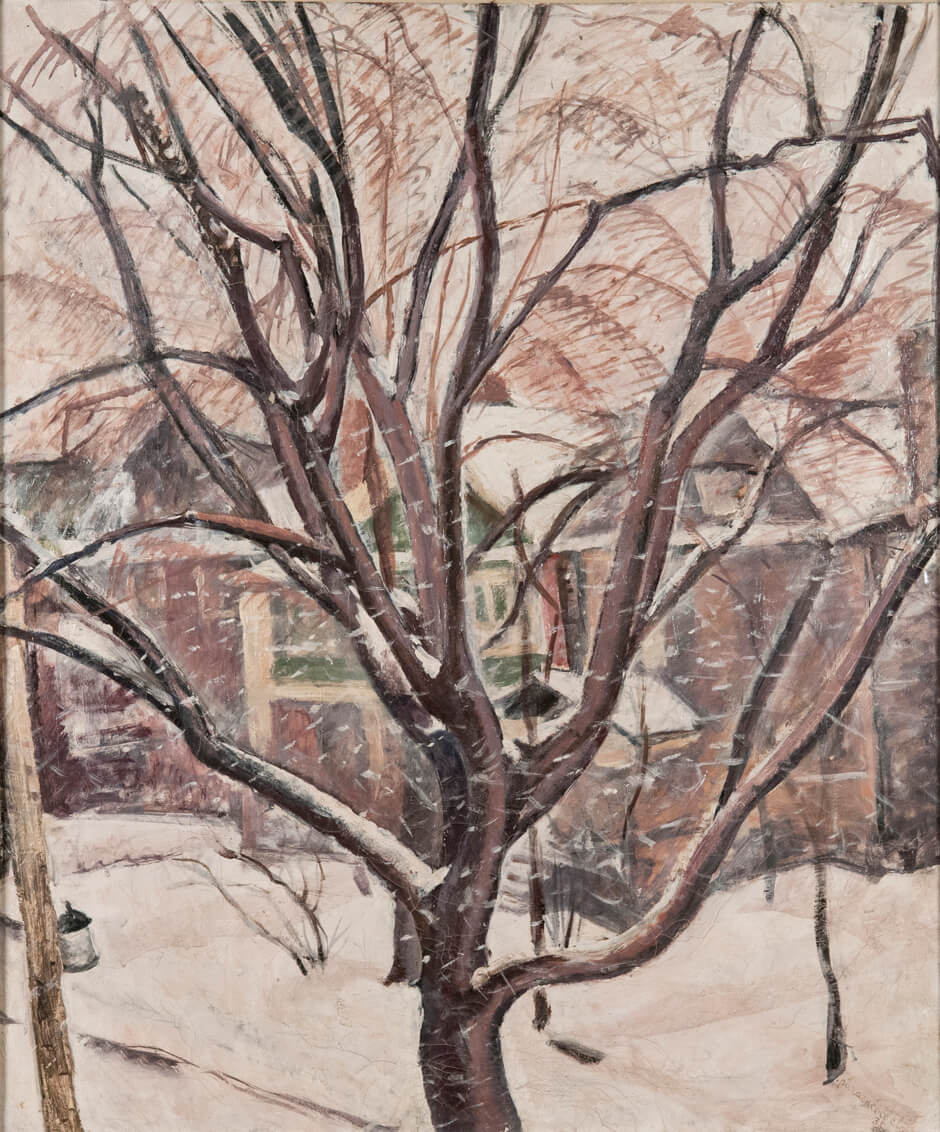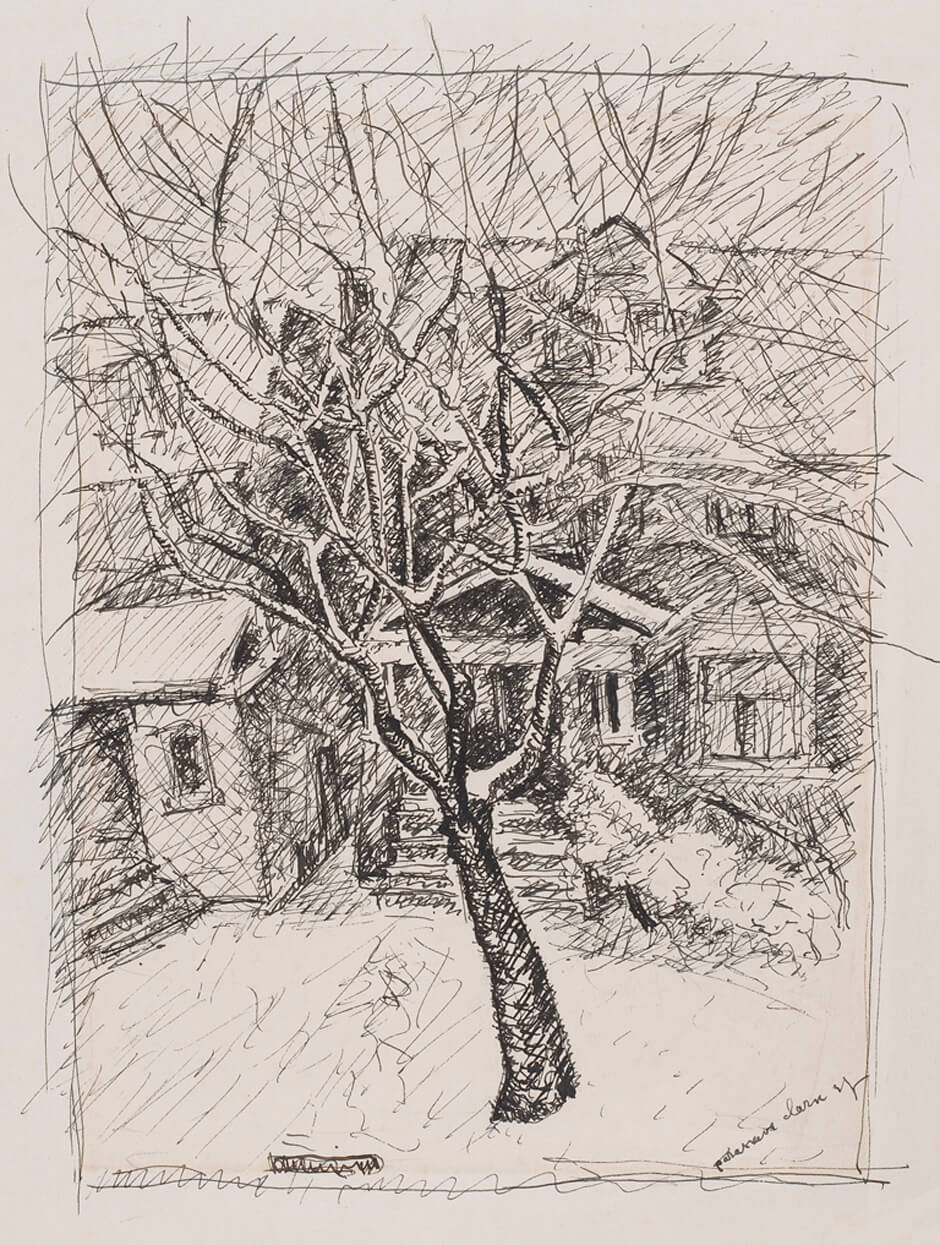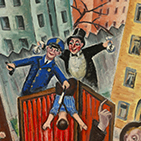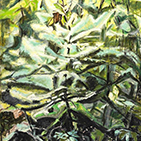Snowfall 1935

Paraskeva Clark, Snowfall, 1935
Oil on board, 64.6 x 54.2 cm
Hawke’s Bay Museums Trust, Ruawharo Ta-u-rangi, MTG Hawke’s Bay Tai Ahuriri, Napier
A large denuded tree (or trees) in the foreground, with the view stretching beyond, is a motif that Paraskeva Clark used with varying complexity throughout her career. These open views, often painted during the winter around her home, were not obscured by the thick foliage of summer and autumn. Snowfall was included in the Exhibition of Contemporary Canadian Painting (“Southern Dominions Exhibition”), in 1936, and sold to a New Zealand gallery during the tour.

Clark’s picture was well suited to the exhibition, which was considered “modern without being radical.” It demonstrated “the newer conception of painting figures and landscapes, new symbolisms of design and idea, new rhythms of line and colour” that represented the more formalist approach and broader range of subject matter promoted by some artists in the Canadian Group of Painters. The “typical” landscape was shifting away from the wilderness model favoured by the Group of Seven toward views of cultivated land indicating a human presence.
In this urban streetscape, Clark depicts her view across the road during a snow flurry, perfectly capturing the atmosphere and quality of light on a winter’s day in Toronto. She would record similar views from her future homes on Briar Hill Avenue in 1937 and from the Roxborough Drive house after 1940. Although Clark’s intention may have been to transplant a wind-tossed tree on Georgian Bay to an urban environment (a reference to the Group’s favourite motif), she was clearly interested in the abstract patterning of naked branches against a background of neighbouring houses, softened by a veil of falling snow.
Other artists using a similar motif at this time included Caven Atkins (1907–2000) (Clark’s co-worker for window displays at Eaton’s College Street), Bertram Brooker (1888–1955), and Brooker’s friend, the Winnipeg painter Lionel LeMoine FitzGerald (1890–1956), who sent work regularly to art society exhibitions in Toronto. His urban scenes featuring groupings of sentinel-like trees—Doc Snider’s House, 1931, for instance—may well have evoked a response in Clark and other local painters.

 About the Author
About the Author
 More Online Art Books
More Online Art Books
 Acknowledgements
Acknowledgements